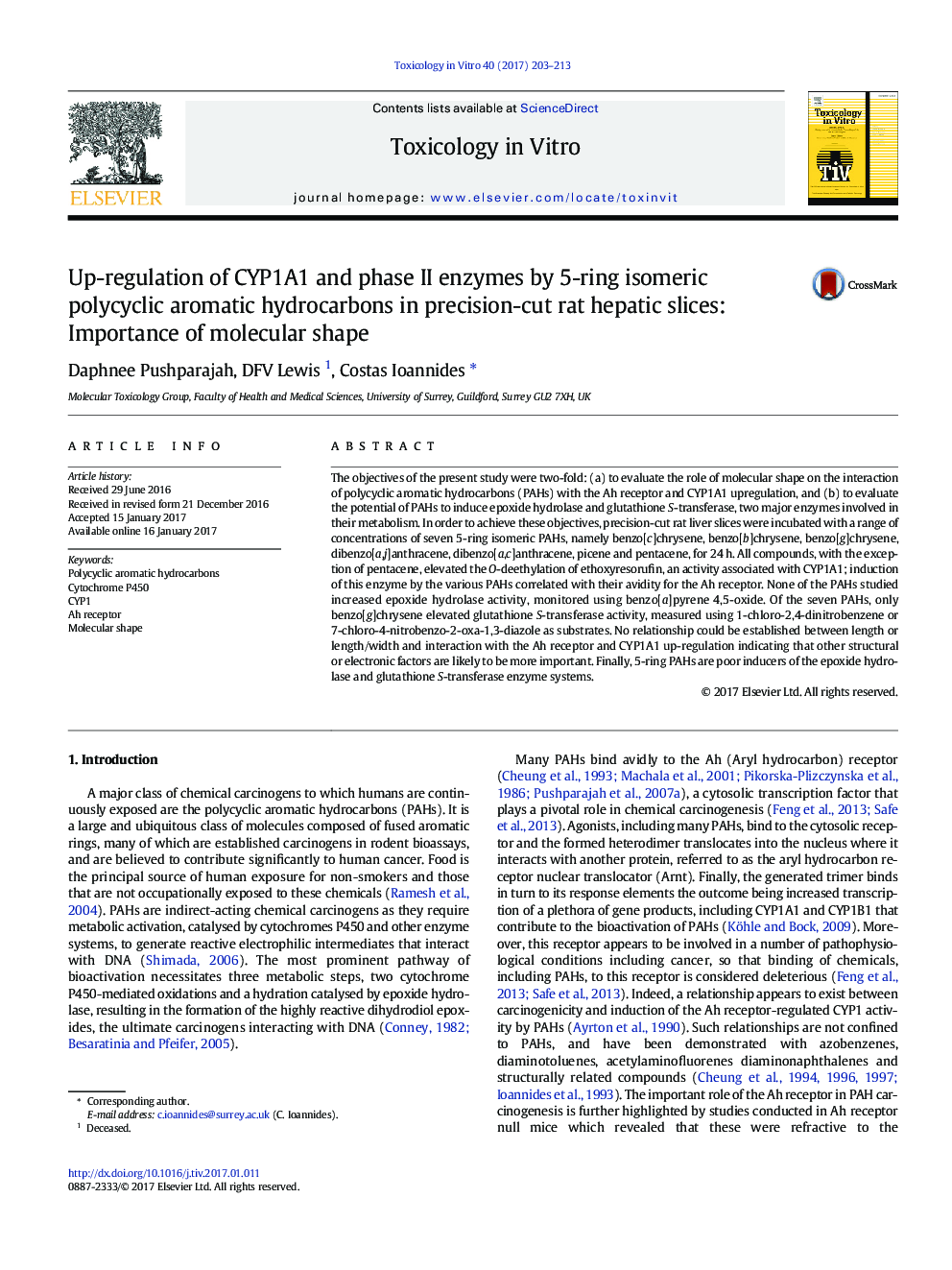| Article ID | Journal | Published Year | Pages | File Type |
|---|---|---|---|---|
| 5562709 | Toxicology in Vitro | 2017 | 11 Pages |
â¢In isomeric 5-ring planar PAHs, ring arrangement governs binding to the Ah receptor.â¢Isomeric 5-ring planar PAHs upregulate CYP1A1 to markedly different extent.â¢Binding of PAHs to AhR and CYP1A1 upregulation is not related to molecular shape.â¢5-Ring isomeric PAHs are poor inducers of epoxide hydrolase and GST activities.
The objectives of the present study were two-fold: (a) to evaluate the role of molecular shape on the interaction of polycyclic aromatic hydrocarbons (PAHs) with the Ah receptor and CYP1A1 upregulation, and (b) to evaluate the potential of PAHs to induce epoxide hydrolase and glutathione S-transferase, two major enzymes involved in their metabolism. In order to achieve these objectives, precision-cut rat liver slices were incubated with a range of concentrations of seven 5-ring isomeric PAHs, namely benzo[c]chrysene, benzo[b]chrysene, benzo[g]chrysene, dibenzo[a,j]anthracene, dibenzo[a,c]anthracene, picene and pentacene, for 24Â h. All compounds, with the exception of pentacene, elevated the O-deethylation of ethoxyresorufin, an activity associated with CYP1A1; induction of this enzyme by the various PAHs correlated with their avidity for the Ah receptor. None of the PAHs studied increased epoxide hydrolase activity, monitored using benzo[a]pyrene 4,5-oxide. Of the seven PAHs, only benzo[g]chrysene elevated glutathione S-transferase activity, measured using 1-chloro-2,4-dinitrobenzene or 7-chloro-4-nitrobenzo-2-oxa-1,3-diazole as substrates. No relationship could be established between length or length/width and interaction with the Ah receptor and CYP1A1 up-regulation indicating that other structural or electronic factors are likely to be more important. Finally, 5-ring PAHs are poor inducers of the epoxide hydrolase and glutathione S-transferase enzyme systems.
